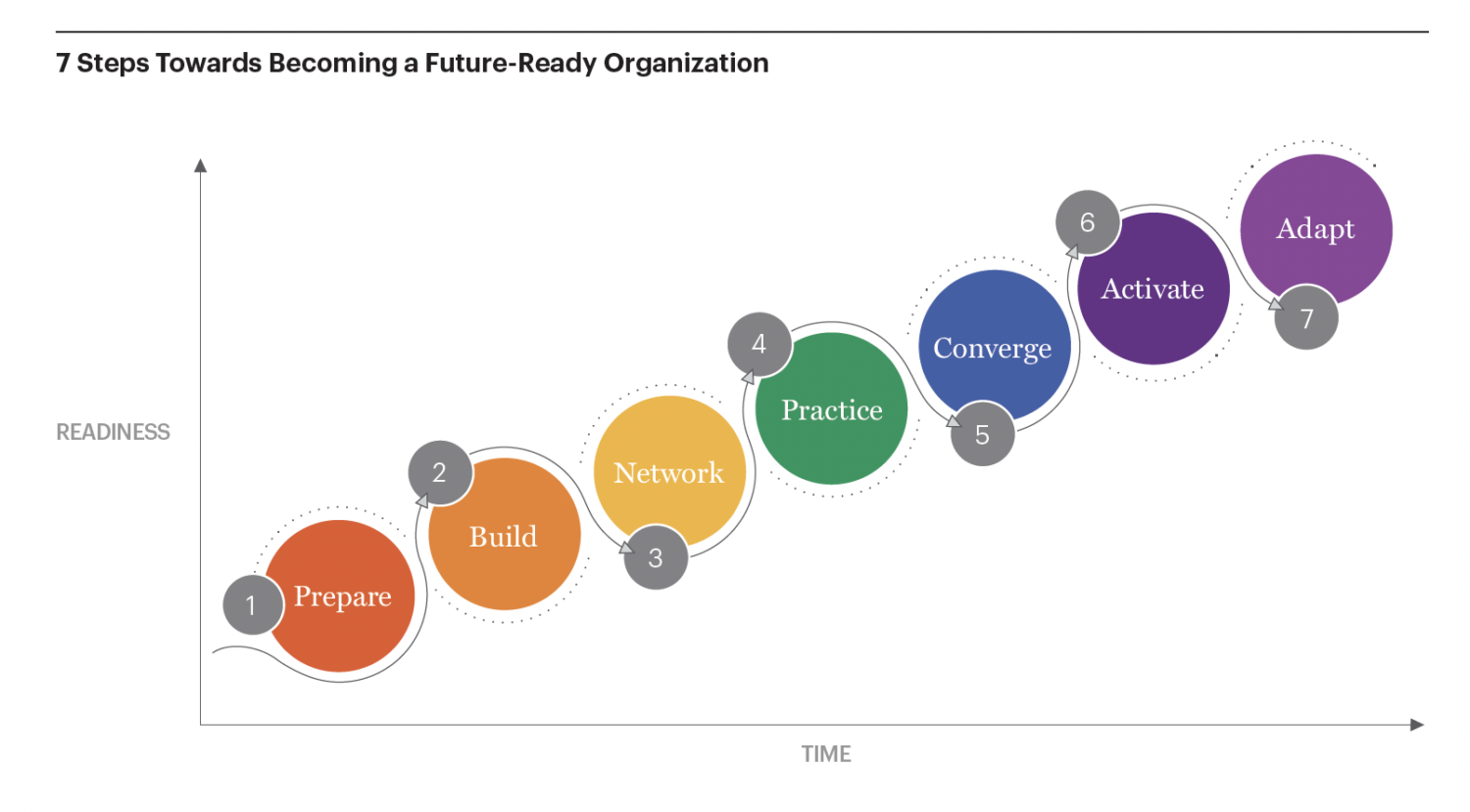7 Steps Toward Becoming a Future-Ready Organization
Change is everywhere. We can prepare and be ready.
Change is everywhere. We can prepare and be ready.
Change is everywhere. Whether it’s artificial intelligence and the next technology revolution, rising temperatures and the climate crisis, the changing nature of work and economic uncertainty, or the breakdown of trust and the shocks to our sense of what is true and legitimate, change keeps coming at us from all directions. It’s really difficult to feel grounded in this world of constant and rapid change. Instead of anticipating the future, we react to change (often too late) or we give into uncertainty (and anxiety) and do nothing. There is another way forward: we can prepare and be ready.
Future readiness is the state of being fully prepared for the future. Future-ready organizations anticipate systemic shifts in their environment and understand their long-term impacts. They envision alternative futures and invest in strategic foresight to manifest their preferred futures. They make sense of change by cultivating a futures mindset up and down and across their organization. Ultimately, future-ready organizations avoid being blindsided by change and are better able to transform valuable foresight into actionable insight by building and maintaining an anticipatory system (a network of resources including people, processes, methods, and tools dedicated to scanning the emerging future).
Future-ready organizations bring foresight and imagination together to see possibilities where none existed before.Rod Falcon, IFTF Vantage Program Director
Whether you’re just starting your journey toward future readiness — or are well on your way — now is the right time to build and level-up the strategic foresight capabilities your organization needs.Ben Hamamoto, IFTF Vantage Research Director

Future-ready organizations around the world — corporations, governments, and civic sector entities — are organized for long-term success with enduring visions and missions. They are ready to take advantage of opportunities more quickly, and are more resilient in the face of unexpected shocks. To build future readiness, organizations need to succeed at three essential capacities:
Here are some examples:
While each of these future-ready organizations is unique, they share one common trait: embracing strategic foresight to anticipate and adapt to the future. They have shifted away from episodic planning, and employ continuous anticipation with strategic foresight. They scan the external environment for signals of change and project the widest range of futures. And they harness their imaginations to see new possibilities where none existed before.
You and your organization can learn to proactively anticipate and adapt to the future, too!
Assessing your current state is crucial before embarking on this journey. To evaluate whether your organization is future-ready, consider and select one of these 4 statements:
This assessment reveals where you’re starting from and exposes differing assumptions about your future readiness. Once you have a clear sense of your organization’s current state, you can embark on the journey toward full future readiness. The 7 steps that follow provide a roadmap to build this strategic foresight capacity, regardless of your starting point.
Based on your assessment of your organization’s current state of future-readiness (see previous page), you may be able to jump ahead or modify the journey and remove one or more of the steps. Whatever your starting point, it’s important to both see and frame the entire journey before jumping in and getting started.
Continue to read the details of each step and how you can put them into action to make your organization future-ready »